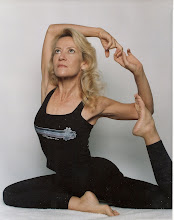1. Yama - Ethical Social Disciplines
2. Niyama – Ethical Personal Disciplines
3. Asana – Posture
4. Pranayama – Breath Control
5. Pratyahara – Sense withdrawal
6. Dharana – Concentration
7. Dhyana – Meditation
8. Samadhi - A state of joy and peace/Union with your highest self/Union with God
Through regulation of practice, the eight limbs are nourished. Personal insights begin to manifest. We become aware of what we put in our bodies and how we interact with the world around us. From this type of introspection, the qualities of Yama and Niyama begin to develop. Asanas and Pranayama grow when focused awareness of the breath is applied while practicing each posture. As we keep the mind fixed on the sound and quality of our breath, the senses are encouraged to turn inward and the element of Pratyahara manifests. As we improve our abilities of controlling the senses from wandering during practice, the subtle quality of concentration deepens in the form of Dharana. In time, the practice moves further internally and refinement of concentration develops as our ability to remain present is enhanced. The practice then grows into a deep resounding meditative experience known as Dhyana. At this stage, we are creating greater potential to explore the finest realms of yoga known as Samadhi, in which we realize the pure essence of all that exists.
The development of these limbs does not unfold in a linear fashion. They sprout when the time is appropriate. There is no way to rush the growth of a tree. It will expand as our understanding of the depths of yoga matures. Patience may be the greatest tool to assist in our journey down the scenic path of Ashtanga Yoga. It winds through all facets of life. Ashtanga may be utilized as a method of keeping physically fit or it may be traversed as a pathway to explore the subtle realms of spirituality. Whatever purpose we choose, there is only one method to reap its benefits: Practice!
From Ashtanga Yoga “The Practice Manual” by David Swensen
skip to main |
skip to sidebar

A Yogi Truck Driver

My Truck

A Yogi Truck Driver
About Me

- Vicki Yost
- * Experienced Registered Yoga Teacher with Yoga Alliance, 500+ hours (E-RYT 500) * NASM Corrective Exercise Specialist (CES) I have been studying yoga since 1981. I have been teaching since 2001. I have been married since 1975, and have 4 children and 11 grandchildren. I'm still sane, I think. I credit my good health (MIND/BODY/SPIRIT) to my Yoga Practice. I love nature in every setting, except maybe the uncontrolled, raging-strength type. Yet, even that is something to marvel at. I drove Long Haul across the United States and Canada, with my husband,for 18 years. My husband was diagnosed with Parkinson's Disease in 2007. I then drove just part-time for FedEx National LTL as a single driver, of Double and Triple Trailers, until 2011. It was interesting work, and a wonderful gift to be able to see this country and take in the sights only God can create. I now teach at Breathe;a yoga studio, located in the 'Daybreak' community, in South Jordan, UT. You can find me there Mondays at 6 am and 9am. (breatheyogaslc.com) I bring classes into Businesses for their employees, and provide Private and Small Group Yoga Classes. You can e-mail me at: vlny57@yahoo.com